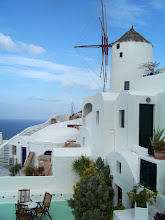
All of four Maya ruins we visited are impressive. The huge pyramids make Teotihuacán the most spectacular; the small-scale ruins against the turquoise Caribbean sea make Tulum the most charming; the various architectural styles make Chichen Itza the most architecturally striking. But my #1 favorite is Palenque, a Maya city built between the 7th C and 10th C located in the state of Chiapas. Palenque gained its name from the village Santo Domingo de Palenque 9km away, since its original name was lost in time. Palenque seems more breathtaking due to its dramatic geographic setting. The morning mists in the mountains add an otherworldly atmosphere to the ruins.
First discovered in 1773, Palenque has been photographed and documented a few times by European expeditions. The first professional excavation took place 1949-1952 led by Mexican archaeologists. The excavation still continues today, and archaeologists estimate that only 5% of the whole city has been uncovered so far! Since Palenque was deeply buried in the jungles for centuries, the process of revealing it was exactly the opposite of creating a new park: instead of building everything out of nothing, Palenque was unveiled by removing everything around it, a method of subtraction rather than addition.
Of all the visible structures in Palenque, the palace is the most fascinating to me. The whole palace is a maze: as you walk, you pass through different corridors, courtyards and rooms, while the tall tower always forms a visual center and implies the directions. Beautiful carvings are found on huge stone slabs in some courtyards. The palace is at once architecturally sophisticated and spatially interesting.
First discovered in 1773, Palenque has been photographed and documented a few times by European expeditions. The first professional excavation took place 1949-1952 led by Mexican archaeologists. The excavation still continues today, and archaeologists estimate that only 5% of the whole city has been uncovered so far! Since Palenque was deeply buried in the jungles for centuries, the process of revealing it was exactly the opposite of creating a new park: instead of building everything out of nothing, Palenque was unveiled by removing everything around it, a method of subtraction rather than addition.
Of all the visible structures in Palenque, the palace is the most fascinating to me. The whole palace is a maze: as you walk, you pass through different corridors, courtyards and rooms, while the tall tower always forms a visual center and implies the directions. Beautiful carvings are found on huge stone slabs in some courtyards. The palace is at once architecturally sophisticated and spatially interesting.

East of Palenque in Guatemala stands the larger Maya ruin Tikal. Hopefully I can get there someday!





